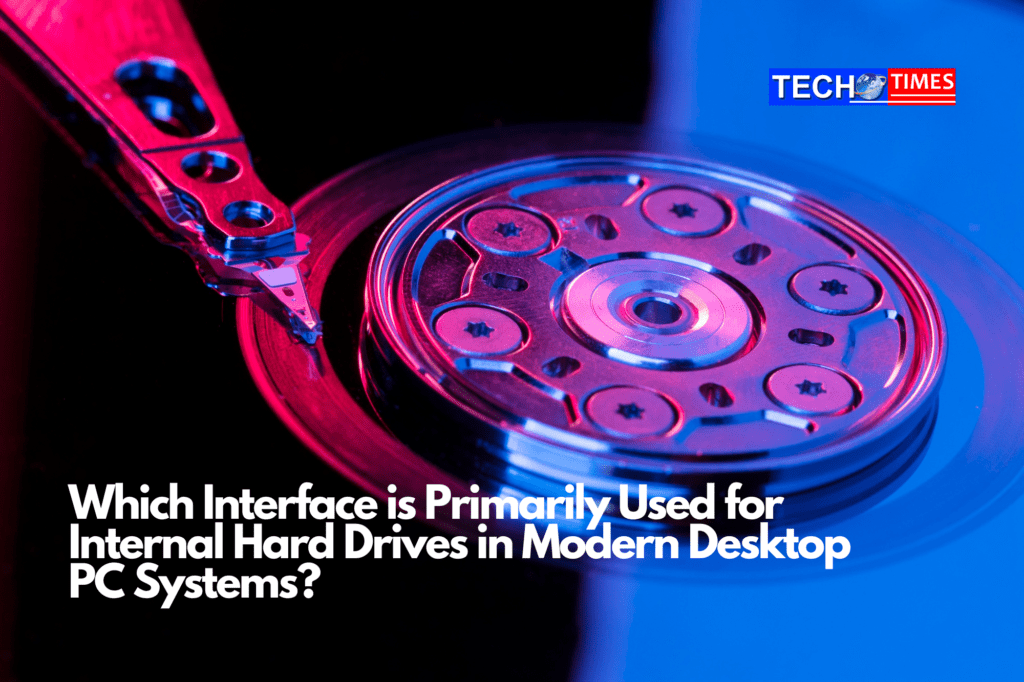Introduction:
In the ever-evolving landscape of technology, the heart of a desktop PC lies in its internal hard drive. As we delve into the intricacies of modern computing, one question often stands out: Which interface takes center stage for internal hard drives in today’s desktop PC systems? Join us on this digital journey as we explore the key players in the world of interfaces, shedding light on their functionalities and relevance.
Understanding the Basics:
Before we plunge into the specifics, let’s take a moment to understand the role of internal hard drives. Think of them as the digital storage units where your operating system, software, and personal files find a home. The interface, akin to a bridge between the hard drive and the motherboard, determines how fast and efficiently data can travel.
- Serial ATA (SATA): The Workhorse of Storage
Leading the charge in modern desktop PCs is the Serial ATA interface, affectionately known as SATA. This interface has become the de facto standard for connecting internal hard drives, offering a robust and reliable connection. SATA supports data transfer rates ranging from 1.5 to 6 gigabits per second, making it suitable for both HDDs (Hard Disk Drives) and SSDs (Solid State Drives).
Advantages of SATA:
- Compatibility: Almost all modern motherboards come equipped with SATA ports, ensuring broad compatibility.
- Ease of Use: SATA cables are user-friendly with a simple plug-and-play design, making installation a breeze for both novices and seasoned tech enthusiasts.
- Versatility: SATA supports a variety of storage devices, from traditional HDDs to the lightning-fast SSDs, providing users with flexibility in choosing their storage solutions.
- Non-Volatile Memory Express (NVMe): Unleashing the Power of SSDs
As the demand for faster data transfer speeds intensified, NVMe emerged as a game-changer. While SATA serves admirably for many purposes, the rise of Solid State Drives necessitated a more advanced interface. Enter NVMe, a protocol designed specifically for SSDs, promising unprecedented speeds and efficiency.
Why NVMe?
- Blazing Speeds: NVMe operates over the PCIe (Peripheral Component Interconnect Express) interface, offering significantly faster data transfer speeds compared to SATA. This makes it ideal for users who demand swift access to large files and applications.
- Reduced Latency: NVMe reduces data access latency, ensuring that your system can retrieve information with minimal delay. This is particularly advantageous for tasks that require lightning-fast responsiveness, such as gaming and video editing.
- Form Factor: NVMe drives often come in a smaller form factor, which not only allows for sleeker designs in desktop PCs but also caters to the compact dimensions of laptops.
- The M.2 Form Factor: Compact and Convenient
While M.2 is not strictly an interface, it’s worth mentioning in the context of modern desktop PCs. M.2 is a form factor that accommodates various interfaces, including SATA and NVMe. This small, rectangular slot on motherboards has gained popularity for its compact size and versatility.
Why M.2?
- Space Efficiency: M.2 eliminates the need for bulky cables, contributing to a cleaner and more organized internal layout. This is especially crucial in compact desktop builds where space is at a premium.
- Future-Proofing: M.2 slots can support both SATA and NVMe drives, offering users the flexibility to choose the type of storage that best suits their needs. This adaptability makes M.2 a future-proof solution for evolving storage technologies.
Conclusion:
In the dynamic world of desktop computing, the choice of an interface for internal hard drives depends on your specific needs and preferences. SATA, with its reliability and compatibility, remains a solid choice for many users. On the other hand, NVMe, with its remarkable speed and efficiency, caters to those who crave cutting-edge performance.
As you embark on your journey to build or upgrade your desktop PC, consider the demands of your workload, whether you prioritize storage capacity, speed, or a balance of both. The interface you choose will play a pivotal role in shaping your computing experience, and armed with this knowledge, you can confidently navigate the tech terrain and make an informed decision for your storage needs. Happy computing
